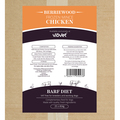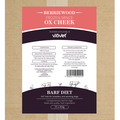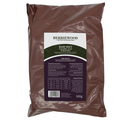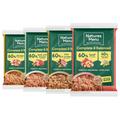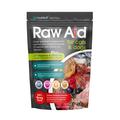When it comes to feeding our dogs, we all have their very best interests at heart. Regardless of what we feed them, albeit wet or dry, kibble or raw, we make decisions based on the information available to us and any past or present experiences of dog care and feeding.
Frustratingly, advice on feeding can often be confusing and conflicting, making weighing up our options a bit of a minefield. For those that are keen on feeding a raw diet, it is vital that we’re given the information and confidence to do so correctly from the outset, as getting it wrong can have dire consequences.
Today, feeding raw is something many dog owners are choosing to do over feeding commercial kibble, which is seen as being highly-processed and indigestible. But for those of us that are new to raw feeding, what exactly do we mean when we say ‘raw’ and what are the benefits to our dogs?
It is important to note that there is abundant information on this topic to be found, so this blog is only a basic overview and by no means a comprehensive discussion of the pros and cons. It is vital that you do your own thorough research before embarking on your raw journey.
The RAW diet
Believed to be most closely aligned with the evolutionary diet of wolves, feeding ‘raw’ means feeding a diet of uncooked muscle meat, bones and organs, as well as other natural components that would have been scavenged in the wild setting.
As opportunist omnivores, the wild ancestors of dogs were designed to eat both vegetation and meat. Variety was the spice of life and continues to be for the modern dog.
But with many of us feeding the same kibble day in-day out, often containing a proportion of cheap fillers like cereal and other indigestible ingredients, it’s understandable that many dogs become fussy and go on to develop allergies and digestive disturbances.
Benefits
The benefits of raw feeding are mostly anecdotal from those who have tried it and seen the benefits for themselves, but there is more and more research coming out to support it. After all, why wouldn’t a dog be well equipped to handle the same diet as its ancestors? Again, it is important to do your own research, but some of the many suggested benefits include better skin and coat, fewer and firmer stools, cleaner, healthier teeth and much more.
How to feed it
The beauty of complete commercial kibble is that it is just that – complete and balanced. Therefore, many believe it is a much safer diet, as there is no risk to your dog of not getting the right balance of nutrients needed to stay healthy, and no risk to you from bacteria when handling raw meat.
It is also much more convenient, cutting down on preparation time and storage.
But if you’ve already taken these factors into consideration and still feel ready to make the change, here are some important things to bear in mind:
- If you plan on bulk buying meat or pre-prepared raw or frozen meals, you may need to invest in a separate freezer to store it.
- Cleanliness is key when preparing it, so make sure all areas are properly sanitised before and after preparation.
- Variety is key. Many people recommend a ratio of 80/10/10 when calculating what to feed. This is 80% meat/fish/eggs/vegetables, 10% bone and 10% organ. Varying the meat source is crucial as feeding only chicken meat, for example, will result in vitamin D and E deficiencies, copper and zinc deficiencies, and a higher than recommended amount of omega fatty acids. A variety of different protein sources will help ensure the diet is balanced.
- The general rule of thumb is to feed 2-3% of your dog’s ideal body weight a day. A dog weighing 50 pounds, for example, would need to eat 1.25 pounds of raw food a day, split over two meals (based on a percentage of 2.5% of the ideal bodyweight).
- Be selective in the bones you feed. Avoid bones like marrow bones and beef femurs that have the ability to splinter and break teeth. Good edible raw bones are those with meat on them, such as chicken legs, turkey necks, lamb ribs etc. Bones provide the necessary calcium to the diet, so shouldn’t be overlooked. Alternatives would be bone meal or eggshell.
- At least half of the 10% organ meat you feed should be secreting organs, such as liver, kidneys or spleen. These act as multivitamins in the diet. Other organs like heart, lungs and tongue are muscle meats, which go towards the 80%.
- Raw diets without fish are typically low in omegas, so feed it a couple times a week, if not daily.
- Fruits and vegetables are beneficial in moderation.
- Supplement vitamin E and microminerals like manganese and iodine, as these are not found in meat in significant enough levels to balance the diet. Multivitamins aren’t ideal as they often contain vitamin A and calcium, which should already be accounted for in the diet. Feeding too much of both can be dangerous.
- You don't have to make every meal yourself, as there are many complete raw and frozen diets on the market.
- Transition from kibble gradually and consider giving prebiotics and probiotics to support healthy digestion at the start.
We hope this information has been helpful for anyone thinking about switching to a raw diet, but please do your own extensive research before transitioning to ensure you are going about it correctly. Doing it wrong can be very dangerous to the health of your dog, so if you are ever unsure, it is always best to seek the advice of a canine nutritionist. You can shop all our frozen and raw food here.
Related products: Berriewood BARF Diets, Country Hunter Frozen Nuggets, Natures Menu Frozen Mince Blocks, Nutriment Raw Complete, Poppy's Picnic Raw Dog Food, Cotswold Active RAW Complete.
Written by: Hannah



